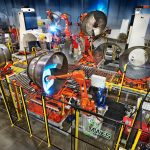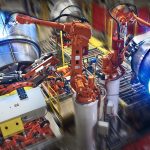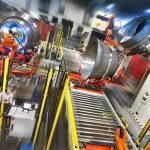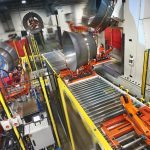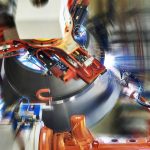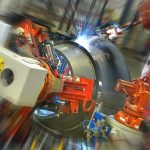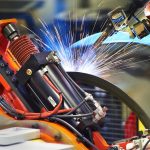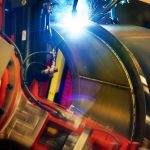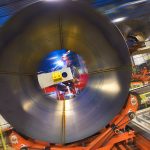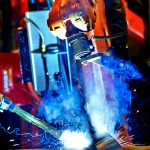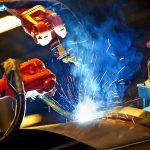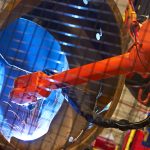Concrete Mixer Drum Welding Line
- Home
- Recent Projects
- Concrete Mixer Drum Welding Line
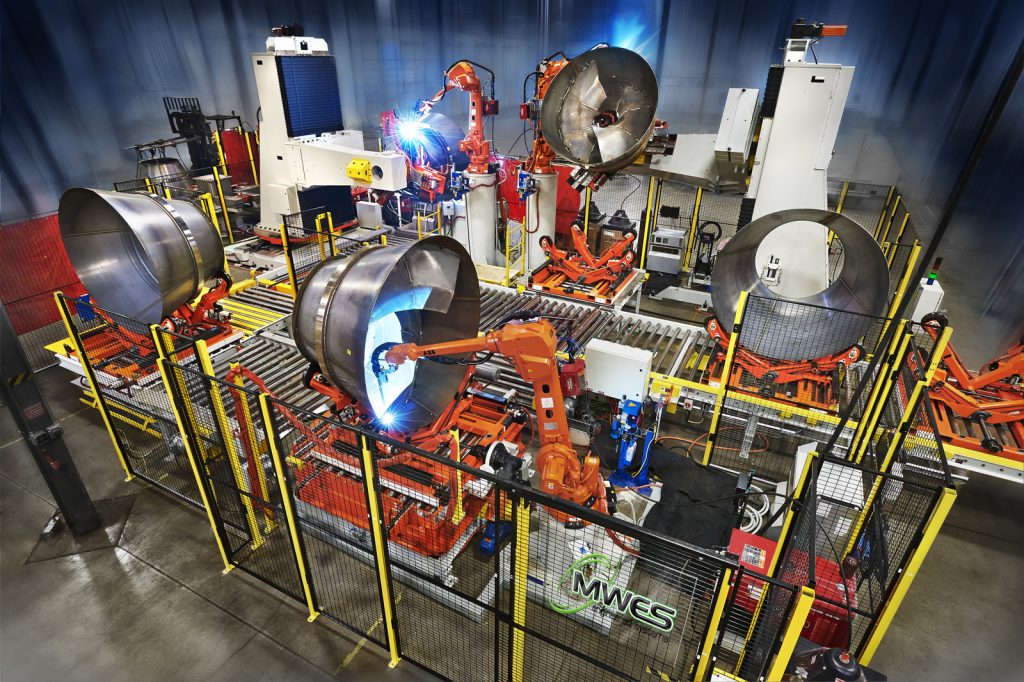
Project summary
MWES provided this manufacturer with a robotic automation system to weld booster cone sub-assemblies as part of a concrete mixer storage vessel assembly line.
The Challenge
This firm was having difficulty acquiring enough skilled welders to fit and weld discharge sections of a concrete mixer drum assembly line. Moreover, mixer drums are a consumable item, so as they produce more trucks they also create a demand for replacement drums which they struggled to keep up with. Fabrication of a single booster cone was time-consuming in terms of “arc on time” but also in terms of material handling as parts were large and difficult to handle.
With ongoing labor shortages plaguing the manufacturing sector and with the complexity of the work, this firm pursued a robotic automation solution. The automation system had to have in-process manual stations to allow operators to inspect and fit additional components onto the drum. Additionally, the operator interaction with the system had to be minimized by automating the part handling as well as the welding process, this was especially challenging as the drum needed to be repositioned many times to make the necessary welds. Lastly, the system had to be flexible such that it would allow the modification of the cone geometry without reprogramming the entire system.
The Solution
MWES integrated a compact welding automation system for our customer. The system features an adjustable fixture station that can adapt to different cone geometries and allows the operator to consistently fit and tack parts before loading them into the system. Additionally, the sub-assemblies are transferred through the system via roller and chain conveyors and are positioned by MWES Skyhook Positioners.
The operator transports the cone from the manual tack station to the first robotic welding station where the first of five weld operations are made around the center reinforcement ring and on the top reinforcement drip ring. Next, the system automatically picks the drum and presents it to the next station where two robots weld two of the four remaining operations on the center reinforcement ring, as well as the four longitudinal seams on the inside and outside of the drum. All 15-axis are coordinated to allow the two robots to weld simultaneously while the positioner spins the cone.
The system then automatically places the cone on the adjustable pallet and moves the drum to a manual station. At the manual station, the operator inspects the completed welds and tacks the mixing and discharge fins into the assembly. The drum automatically indexes to the station where it fully welds the fins to the cone section. The cone needs to be rotated during this phase so a drive system couples and decouples from the pallet to allow the robot to spin the cone. Once the fin welding is complete, the pallet transports the cone to another positioner where the robot picks the cone from the pallet and makes two remaining weld operations on the middle reinforcement ring and then places the cone back on the pallet to be shuttled out of the cell.
Impact to the Customer
The final automation system MWES provided our customer brought about several important improvements to their assembly line process. By only requiring two operators to run, the automation reduced the amount of skilled labor needed to produce the cone sections. That in effect improved overall safety by reducing the amount of manual part handling that was needed by the operators. Finally, the part-to-part time of the finished automation cell was brought under 30 minutes.
Midwest Engineered Systems has a wide range of experience in robotic welding automation systems. If you’re looking to improve your welding throughput, we have the knowledge and experience to make the project a success.
Contact us to learn how Midwest Engineered Systems can automate even your most complex and challenging operations today!
Innovation Through Automation
Client Details
A leading manufacturer of concrete mixer transportation trucks.

